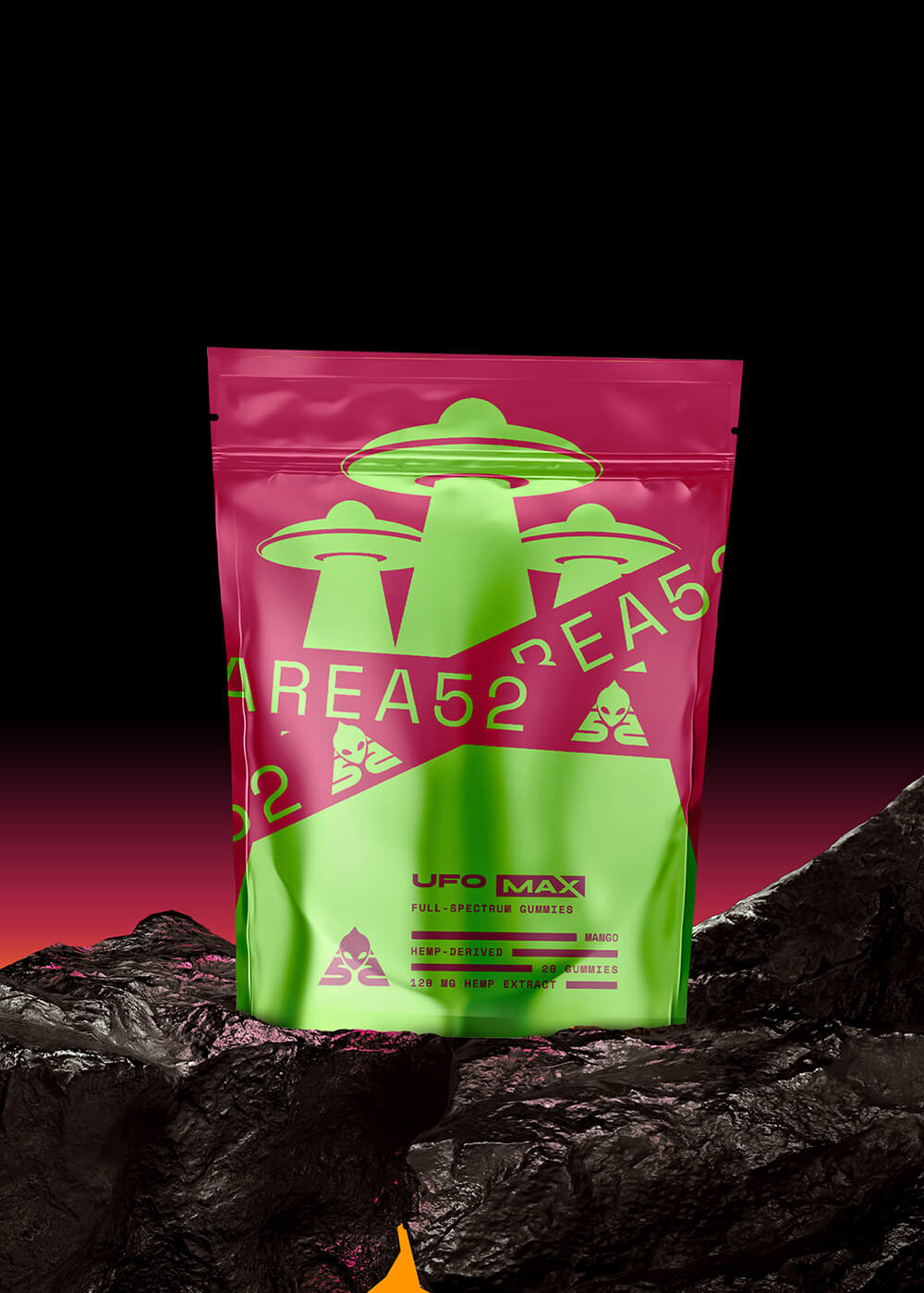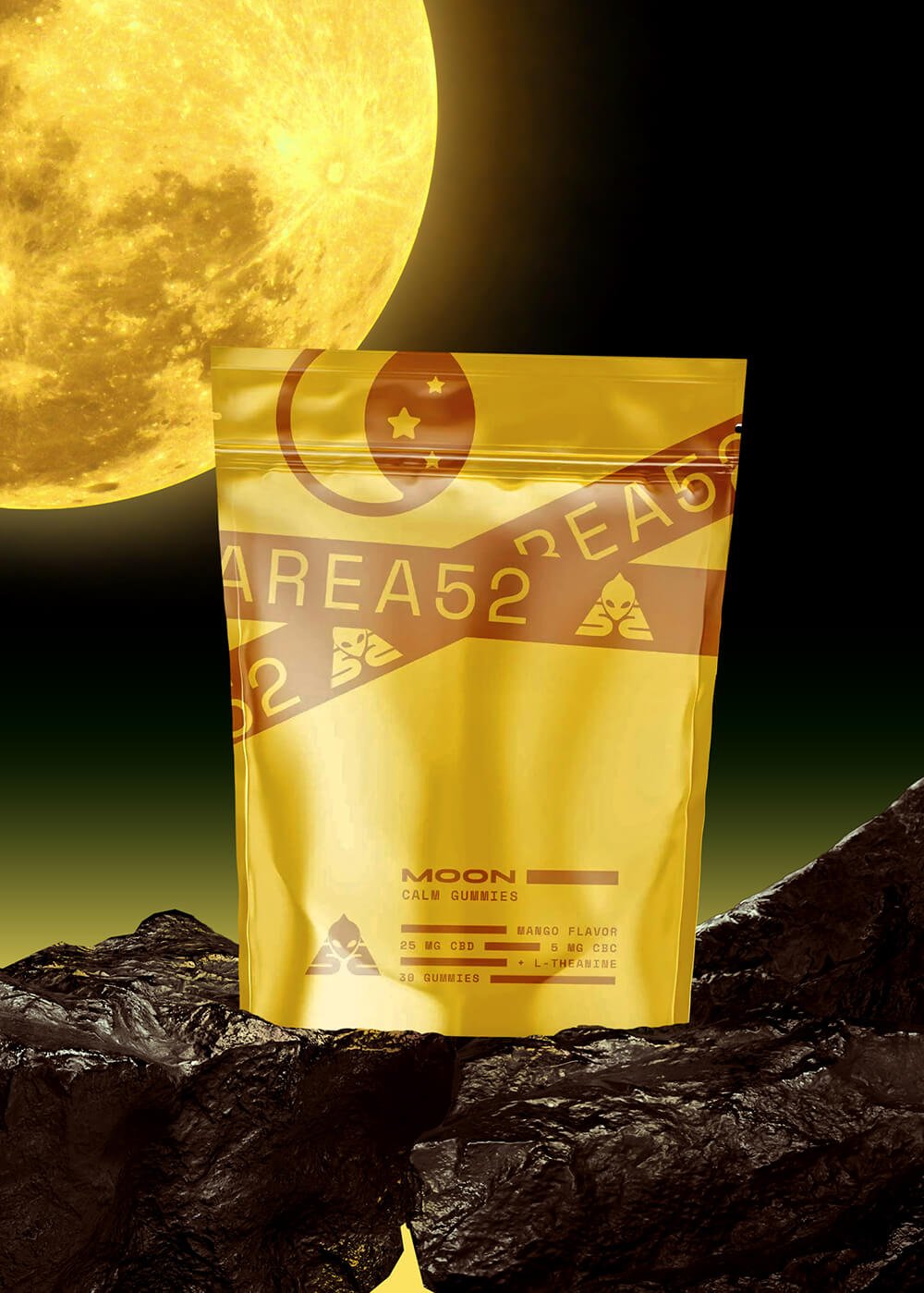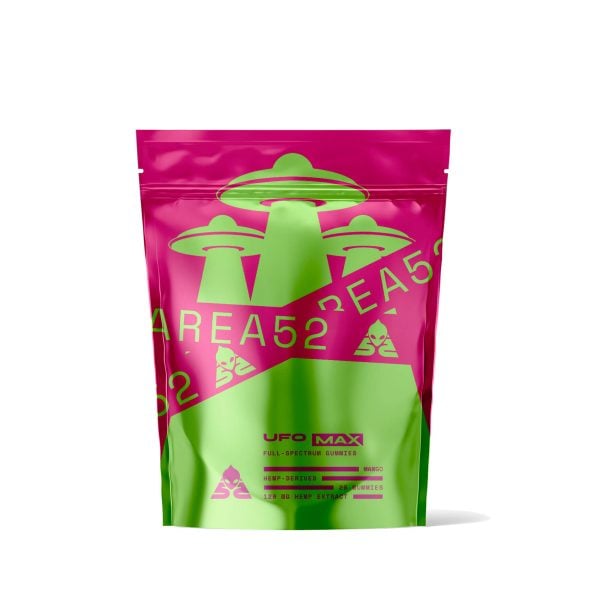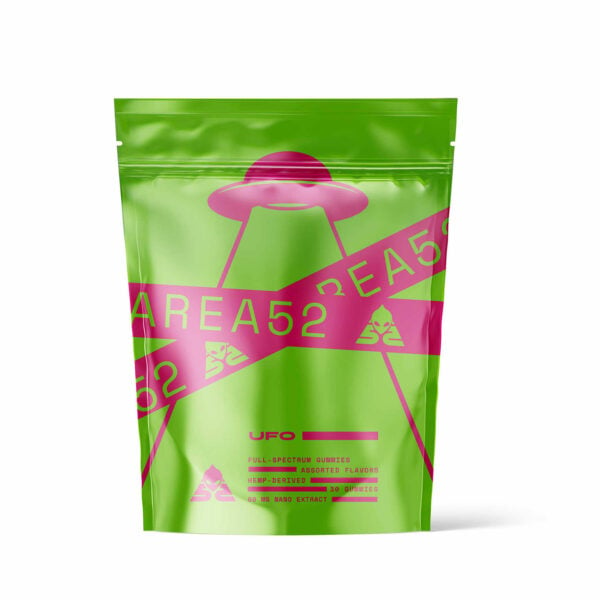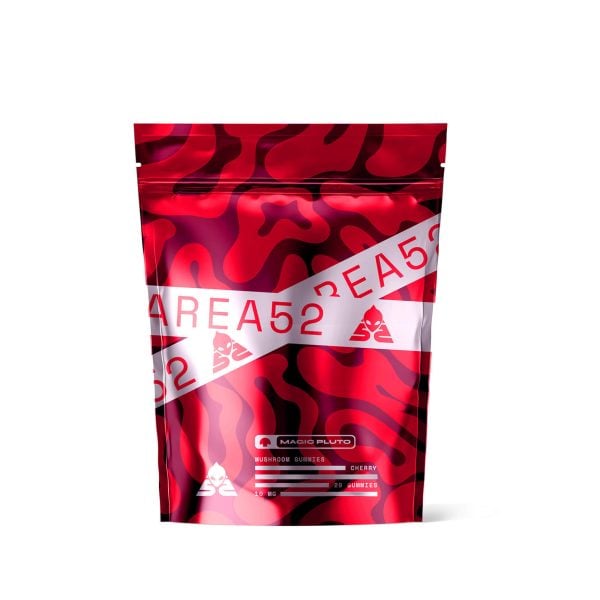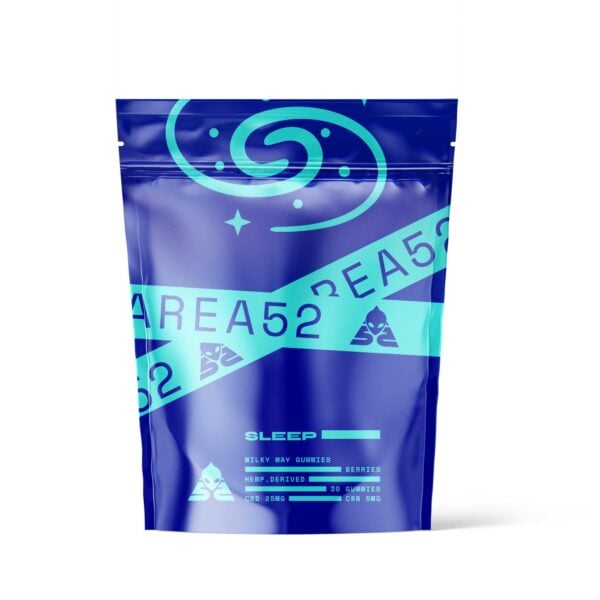What Exactly Is Live Resin?

The world of cannabis products, including concentrates, can be wonderful but confusing.
Shatter is hard and brittle like hard sugar candy, budder is thick and gooey like a warm, cheesy bacon drip, while wax is well… waxy.
With its malleable consistency, live resin falls somewhere in between the wax and the applesauce texture — not taffy-like, but also not dripping.
There’s a lot about live resin that makes this concentrate uniquely valuable. This article presents everything you need to know about live resin, its benefits, effects, price, and much more.
What Is Live Resin?
Live resin is a relatively new cannabis concentrate that fully preserves the flavors and aromas of the living cannabis flower. It can do that because it’s extracted from flash-frozen cannabis using a solvent.
This cannabis concentrate offers a “fresher,” more intense aroma thanks to its complex terpenes profile that carries over from the original plant. Aside from being the tastiest concentrate, it’s also cheaper and easier to make.
Live resin is typically dark yellow, but its color can range from light yellow to white. It’s a potent, extremely sticky substance with a lot of THC, so you’ll need a dab tool to handle it. It can also be made from live hemp plants; in that case, it contains a higher percentage of cannabidiol (CBD).
Live resin can come in various consistencies, including wax, sugar, sauce, and badder. One of the toughest to pull off is shatter, which it’s hardly ever offered on the market.
Arguably the best thing about this concentrate is that it’s a full-spectrum substance, so it preserves all the cannabinoids and terpenes from the original plant. Best enjoyed for vaping and smoking, live resin offers the user the full taste and smell of cannabis.
Live Resin & Terpenes
Live resin is incredibly rich in terpenes and flavonoids because, unlike other concentrates, the live resin extraction process involves flowers that haven’t been dried or cured but are immediately frozen.
Live resin is made using premium cannabis material: buds and sugar leaves.
Cannabis buds, or “nugs,” are the petalless flowers of the plant. They contain the highest concentration of trichomes out of all other plant parts, including fan leaves, stalks, and branches. The sugar leaves are the tiny, protective leaves that the buds grow around them during the flowering phase. These small leaves produce fragrant trichomes and are less rich in cannabinoids than buds but richer compared to other parts of the plant.
When creating other concentrates, makers cure and dry the cannabis material, which causes a tremendous loss of fragile terpenes. A study found that an extract (controlled sample) can lose between 10% to 50% of its terpene content after only a month of standard storage [1]. The only thing that can prevent terpenes from drying is freezing the extract or the freshly harvested plant [2].
A 1995 study performed by researchers at the University of Mississippi investigated the volatile oil composition of fresh and air-dried cannabis buds.
They came to a conclusion that:
- Fresh buds retained the largest terpene content.
- Most terpenes evaporated during the first week, after which their loss plateaued.
- Drying the cannabis flower changes the concentration of terpenes in the flower oil.
Air-drying cannabis causes smaller, lighter terpenes (monoterpenes) like limonene and myrcene to evaporate quickly. The heavier terpenes (sesquiterpenes), like caryophyllene, represent a large percentage of the flower oil after drying because they evaporate slowly [3].
The researchers found that fresh buds had the largest terpene content. Cannabis that’s been frozen immediately upon harvesting has retained the terpenoids and flavonoids. The best part about this concentrate is that it smells exactly like the cannabis flower when freshly harvested.
Look & Feel of Live Resin

Live resin doesn’t have a universal shape or color. Its color and flavor heavily depend on the type of cultivar used for extraction. The cultivar’s cannabinoid and terpene profile affects the main portion of the chemical and physical characteristics of the extract. Because live resin contains more terpenes than other concentrates, the added essential oils make its consistency looser.
Terpenes make the concentrate runnier and more malleable. Although available as several consistencies, including sugar, sauce, and badder/budder, live resin in a shatter form is the most difficult to create. The reason for that is that shatter is brittle, while the process of creating live resin and preserving the terpenes makes it more liquid. This prevents the concentrate from becoming hard and rigid.
Is Live Resin A Full Spectrum Extract?
Yes, live resin is considered a full-spectrum extract.
Full-spectrum extracts aim to capture the entire cannabinoid and terpene profile of the raw cannabis plant. With its rich terpene profile and high cannabinoid content, live resin is doing a great job at it.
It’s important to mention that not all full-spectrum extracts are made from frozen fresh plant materials. Kief, or the sifted, accumulated trichomes of the cannabis flower, is also a full spectrum extract but made from cured flower.
Cured resin is an umbrella term for dried cannabis material used to create extracts and concentrates like shatter, wax, batter, and more.
How Is Live Resin Made?
Live resin is made from fresh, flash-frozen cannabis plants immediately after harvest. Manufacturers use liquid nitrogen or dry ice to maintain the flower cold through the extraction process. This is not a new concept because flash-freezing has been used on regular fruits and vegetables to preserve their peak ripeness.
The plants stay frozen during the extraction process and skip the regular processes of harvesting, including drying, curing, and trimming. Then, they go through the extraction process with a solvent or a mix between butane and propane.
The reason for skipping the drying and curing process of preparing cannabis is to preserve the terpenes, which give the plant and the final extract its flavor and aroma. The flower’s trichomes house the terpenes. During the drying and curing process, the plant becomes free from moisture and chlorophyll, but the process is devastating to the terpenes because exposure to heat, oxygen, and light can degrade them.
Harvesting can also damage the cannabis flower by separating some of the trichomes during the moving and drying process. When the plant is frozen seconds after harvest, the trichomes are fully intact and retain their valuable flavor and fragrance — which ultimately transfers to the final extract.
Benefits of Live Resin
The cost and effort of making live resin is absolutely worth it when the final product is revealed. Here are some of the benefits of this extract:
1. It’s Flavorful
Resin is far more flavorful and “terpy” than other concentrates. The process of preserving the trichomes retains the flavor profile of the original plant, so each strain provides various tastes and sensations.
2. It’s Potent
Preserved trichomes also keep cannabinoids intact, so live resin is known to be potent. Research shows that full-spectrum extracts affect the body’s endocannabinoid system better than cannabinoids in an isolated form. Having terpenes in the mix accentuates the entourage effect, which can be rare with some concentrates.
3. It’s Sensational
The therapeutic effects of cannabis compounds are not the end goal for many. The cannabinoids and terpenes that affect our well-being also impact the way we feel. Live resin extract causes a sensational high that’s colored by the strain’s ratio of terpenes and cannabinoids. It can make you feel calm or uplifted, creative, give you a heady high, or leave you in a state of daydreaming.
How To Consume Live Resin?
There are more than a couple of different ways to consume this extract, including:
1. Dab Live Resin
The best way to consume live resin is by dabbing, which is essentially vaping. To do that, you need to use a device known as a dab rig, but if you don’t want to invest in dabbing equipment, go for a live resin vape pen as a simpler alternative.
A dab rig is a water pipe with a nail attached to it. The nail is a flat bowl or the place where you put the extract. It’s produced from materials that can withstand high temperatures. The standard dabbing temperature is 545-570℉, a great range for most dabs — especially live resin.
Live resin cartridges are special vape pen made for cannabis concentrates like live resin. It’s similar to a vape pen, but it’s pre-filled with resin — or dabs, which have a more malleable and waxy consistency rather than being fully liquid. Dab pens are built bulkier and include a heated coil, while vape pens embody a slim and sleek design with a built-in atomizer.
For dabbing, you’ll also need a dabber tool that helps with the application of the live resin. Go for a dabber with a spoon-shaped tip instead of a flat tip for an easier application.
Before taking the dab, preheat the nail to an exact temperature because high temperatures burn the terpenes in the extract. The ideal dabbing temperature for a more flavorful dab is 315-400℉, which is a cooler nail surface. Once the resin touches the nail, the vapor hits and should be inhaled through the opening of the rig.
Related: What Is Marijuana Dabbing?
2. Add It to Flower
While smoking live resin is not advisable like you would smoke cannabis flower, you can top off your bowls, joints, and blunts for an added kick.
3. Make Live Resin Edibles
You can also add live resin to your favorite food and make live resin edibles.
You can melt your favorite chocolate in low heat and add a dab of live resin. You can even incorporate it into your brownie mix.
How to Store Live Resin
Storing live resin is no different than other cannabis concentrates. It’s best to keep it in an air-tight container and store it in a cool place, preferably in the fridge. Cool temperatures prevent terpene degradation and evaporation and keep the resin’s smell and taste fresh and tasty for as long as possible.
An air-tight and lightproof container helps preserve the potency and quality, but it also causes the resin to harden and be more difficult to handle. The best storage containers for live resin are those made out of silicone or glass, which also make it easier to scrape sticky concentrates out of it.
Cost of Live Resin
When it first hit the market, live resin was the new, rare product only found in certain markets and offered at a premium price that often exceeded $100 per gram. This extract is still sold at a higher price compared to other concentrates, but it’s much more affordable and comes in a range of options. The typical starting price for a gram of a higher-end live resin is $60 to $80 and upward, while a lower quality one is offered at $30 per gram.
How Does Live Resin Compare to Other Concentrates?
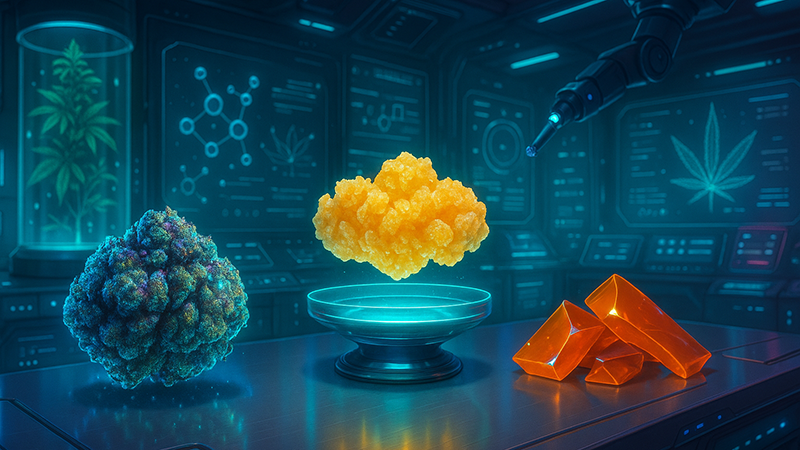
Live resin can have multiple different textures. This extract sits between wax and sauce, but depending on the amount of terpenes and type of extraction, it can be molded into different consistencies, even post-extraction.
Live Resin vs. Live Rosin
Live resin is made by extracting fresh frozen cannabis plants using a solvent like butane or propane. Live rosin is also made from fresh frozen cannabis, but its extraction is solventless. To create live rosin, manufacturers use heat and pressure — usually through a press — to remove the trichomes from cannabis nugs.
As the name implies, both extracts are “live” because they come from the frozen cannabis material. They both contain a strain’s entire terpene and cannabinoid profile, and both are ideal for cannabis enthusiasts who enjoy robust flavors. To be clear, regular resins and rosins are still a thing, and they’re made using solvent and solventless extraction, respectively.
Live Resin vs. Distillate
Distillate is a cannabis oil created with resin refinement, which can remove impurities or isolate a specific cannabinoid. The main difference between both live resin and distillate is in the high terpenes content present in the resin. Distillate doesn’t retain any of the terpenes that a freshly-squeezed resin has. Live resin also smells more than distillate, and its vibrant taste and aroma resemble fresh buds.
Live Resin vs. Sugar Wax
Wax is stirred, whipped, or mixed during purging, which results in the malleable concentrate it’s known for. Sugar wax has a brown, sugar-like texture that appears in clumps, while live resin is a bit more liquid. Although sugar wax has a high terpene profile, it’s still not as erratic and potent as live resin.
Live Resin vs. Sauce
Although live resin can be made into several consistencies, except for shatter, it’s a bit different than sauce. Sauce concentrate is packed with THC and has the consistency of applesauce but is not quite as runny. Sauce concentrates consist of two parts — terpene-packed oil and cannabinoid-rich crystals. The oil gives a really tasty dab because it can be made of up to 30% terpenes.
Live Resin vs. Shatter
Shatter concentrates are diabolically different from live resin extracts. Before live resin hit the market, shatter was the go-to, most potent cannabis concentrate. Shatter contains an extremely low terpene content and displays a pristine, glass-like form.
Live Resin vs. Budder
As the name implies, budder is a cannabis concentrate with a similar texture and color to butter. This THC-rich concentrate displays amber or yellowish color, so you could easily mistake it for peanut butter.
Budder packs a powerful punch because it contains up to 80% THC content. The difference between budder and other concentrates is its butter-like consistency which makes it easy to handle. Scoop it like a tablespoon of butter and use it with a dab rig or top it on a joint or bowl.
Origin of Live Resin
Unlike hash, which dates to ancient times, live resin’s origin goes back to the period between 2011 and 2013. Its appearance is associated with a small group of Colorado growers and extractors — more specifically, William Fenger or “Kind Bill” and EmoTek Labs founder “Giddy Up.”
Together, they pioneered live resin extraction and developed a specialized extractor that runs at low temperatures to preserve terpenes and flavor during extraction.
The initial attempt to create this concentrate was with the Original Diesel variety. During a harvest, Fenger considered the potential of an extract made from the live cannabis plant. He hypothesized that such an extract would retain the original terpene profile and flavor. However, his initial idea to flash freeze the cannabis material and produce butane hash oil proved dangerous and unappealing.
The idea of extracting the cannabinoid from fresh material, despite the failure, stayed with Fenger. In 2013, he was contracted by EmoTek Labs for technical support of one of its closed-loop model extraction units at a medical marijuana production facility. That’s when the lightbulb turned on. He knew that he’d found the piece of technology that would allow him to extract effectively from a live cannabis plant.
Both parties collaborated on the idea for a month and experimented with various strains. Finally, they produced the first successful batch from a 24-hour extraction session from whole, flash frozen plant material. The extract had a potent aroma and flavor and was named live resin.
Will Live Resin Get You High?

Yes, marijuana-derived live resin with high levels of THC will get you high. It’s one of the most potent concentrates that offers the full palette of cannabis aroma, flavors, and sensations, so dose wisely.
Hemp-derived or CBD live resin won’t get you high because it contains a low percentage of delta 9 THC. But, it does contain an array of strain-specific terpenes, so beware when dosing because terpenes can affect your mental state. They certainly won’t get you high but may uplift your mood or make you feel a bit lazy.
TLDR: What Is Live Resin Extract?
Live resin extract is a premium cannabis concentrate that preserves as much of the aromatic terpenes as possible, along with the full-spectrum of cannabinoids.
This extract is derived from flash-frozen, live cannabis plants that have retained the full terpene and cannabinoid profile. Thanks to its rich terpene profile, live resin concentrate offers an abundant, vibrant flavor and potency, making it the most south-after concentrate.
Several high-end brands offer live resin that uses premium ingredients and safe extraction processes. The best way to consume live resin is dabbing, and instead of a dab rig, you can use a dab pen. Although a bit pricier, this extract is worth the money.
FAQ on Live Resin
Want to know more about live resin? We’ve compiled a short list of the commonly asked questions about live resin.
1. What is So Special About Live Resin?
Live resin products are pretty special since their extraction method retains most of the plant compounds. These include not just the valuable cannabinoids and terpenes but other beneficial compounds as well, ensuring you a potent full spectrum experience.
2. Does Live Resin Give You a Stronger High?
Yes. Live resin products tend to give you a stronger high. Remember, live resin retains most of the cannabinoids and other compounds found in hemp or marijuana plant, especially its terpenes, which could amplify the effects of THC.
3. Is Live Resin Healthy for You?
Yes, the compounds found in this cannabis extract resin offer many health benefits. It can ease discomfort and boost mood, among others.
However, overconsumption could lead to adverse side effects, such as increased anxiety, paranoia, and hallucinations. it can also cause dry mouth and dry eyes.
4. Is Live Resin OK to Vape?
Vaping live resin should be okay. It’s actually one of the popular consumption methods of live resin products. However, make sure that you’re using the correct device for a smooth experience.
5. Why Do They Call It Live Resin?
It’s called “live resin” because of its production process that preserves almost all the compounds found in fresh hemp or marijuana plant. The final product preserves THC’s potent effects and the plant’s natural flavors.
6. Does Live Resin Last Long?
With proper storage techniques, this concentrated form of cannabis product can last for about six months and retain its THC potency.
Just make sure that you keep your live resin in an airtight glass container. You can also light-proof the container by covering it with a dark paper or cloth. Lastly, make sure that you keep it in your freezer or refrigerator.
Remember, heat, air, and light speed up the degradation process of both cannabinoids and terpenes.
7. What is the Difference Between Resin and Live Resin?
Resin is made from dried and cured plants, while live resin is made from immediately flash frozen fresh plant.
Both concentrates are potent, but live resin is a little stronger due to its higher concentration of the plant’s essence.
8. Do Live Resin Gummies Hit Faster?
No. The effects of live resin gummies usually kick in within 30 minutes to a couple of hours, compared to the effects of dab live resin, which can be felt in under 10 minutes.
If you’re going to consume live resin gummies, be sure to start with a lower dose and wait for about two hours before increasing your dose.
9. Does Live Resin Help You Sleep?
Yes. Live resin can help you sleep. However, this also depends on the strain used. For example, indica strains give you a strong body high and are pretty relaxing, especially those that contain terpenes like myrcene and linalool. These promote relaxation and make you feel calmer.
On the other hand, live resin made from sativa strains makes you feel more energized and euphoric. It also
When buying live resin for sleep, always check the product label and make sure it’s extracted from indica strains or contains relaxing, sleep-inducing terpenes.
10. Is Live Resin Good for Anxiety?
Live resin is a pretty versatile concentrate. At lower doses, it helps ease stress and anxiety. But at higher doses, it can trigger nasty side effects, one of which is anxiety.
If you’re new to this type of product, we suggest taking a low dose and starting slowly to avoid side effects.
References
- Bueno, J., Leuer, E., Kearney, M., Green, E. H., & Greenbaum, E. A. (2020). The preservation and augmentation of volatile terpenes in cannabis inflorescence. Journal of Cannabis Research, 2(1). [1]
- Grafström, K., Andersson, K., Pettersson, N., Dalgaard, J., & Dunne, S. J. (2019). Effects of long-term storage on secondary metabolite profiles of cannabis resin. Forensic Science International, 301, 331–340. [2]
- Ross, S. A., & ElSohly, M. A. (1996). The Volatile Oil Composition of Fresh and Air-Dried Buds of Cannabis sativa. Journal of Natural Products, 59(1), 49–51. [3]
